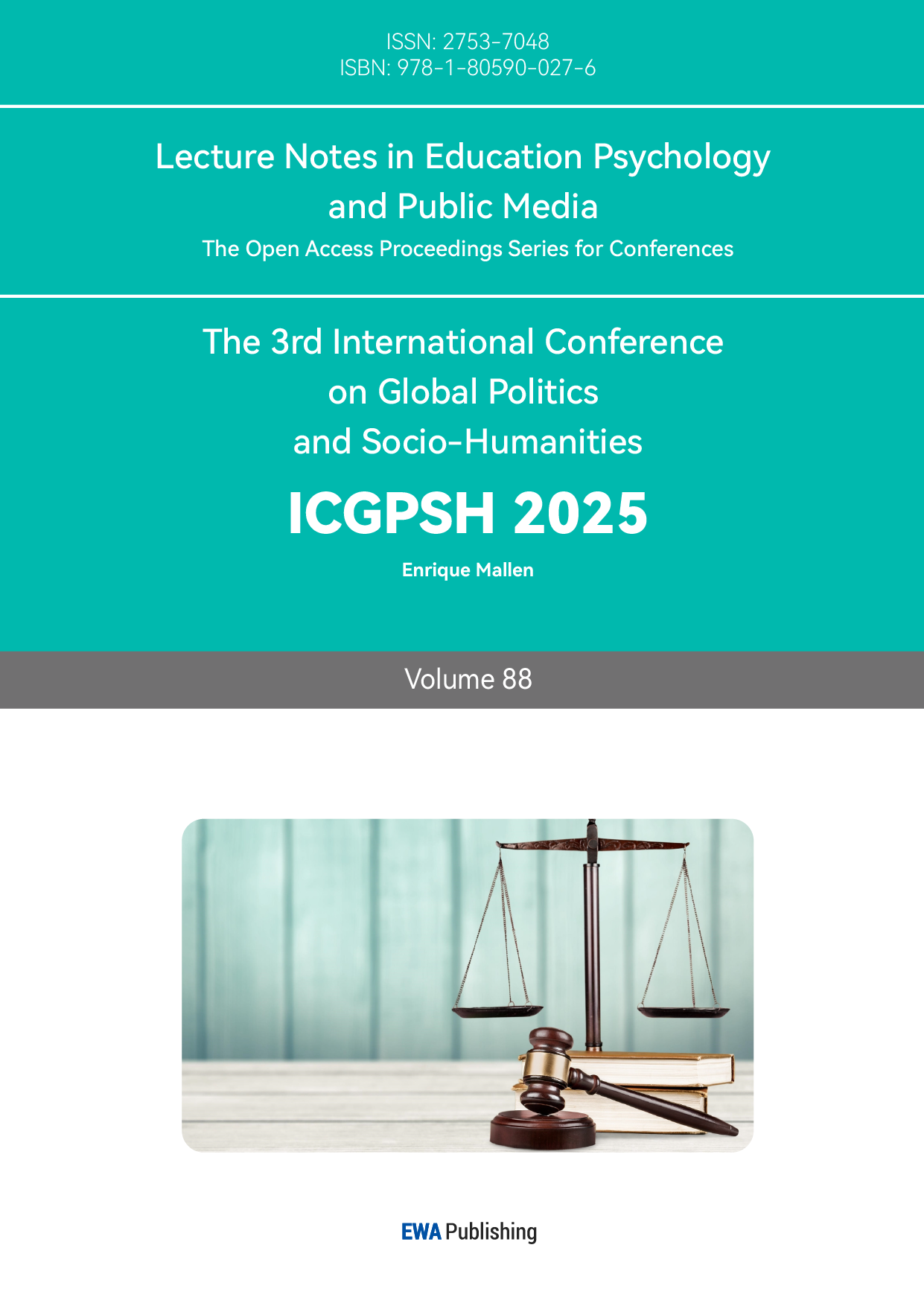1. Introduction
Traditionally, originality stems from a creator's intellectual effort, which determines legal protection for works. However, the integration of AI and big data through AIGC has disrupted traditional creation methods, blurring the lines of human authorship. AIGC can independently produce content resembling human works, challenging traditional originality standards. [1] Tools like Sora, which convert text into highly creative and coherent videos, further complicate the determination of originality. This raises critical questions about protecting creators' rights and defining the originality of AI-generated content, becoming a key issue in intellectual property law.
This article explores the theoretical basis of originality in copyright law, using Sora as a case study to analyze challenges and propose solutions for determining the originality of AIGC, in order to foster AIGC's healthy development and contribute to a fairer intellectual property protection framework.
2. The Theoretical Basis for Identifying the Originality of AI-Generated Content
2.1. Criteria for Identifying Originality in the Context of Traditional Copyright
In copyright law, originality is key to determining legal protection; however, its definition and measurement lack clarity, leading to frequent disputes. Standards of originality also differ across countries.
2.1.1. The Judgment Standard of "Origin" Abroad
Internationally, two main tendencies have long defined "originality" in academic circles: one is to adopt the copyright system of the Anglo-American legal tradition, represented by the United States and the United Kingdom, which is derived from Locke’s labor theory. This system maintains that works should be protected as long as the author contributes their work and wisdom. The copyright system does not require the work to achieve a high level of creativity. For instance, British copyright law follows the standard of "input skill, labor, or judgment," requiring the work’s expression to reflect the skill, judgment, labor, or selection of the author. In earlier times, U.S. law followed the theory of sweat or hard collection, which stated that works could be protected by copyright as long as the author expended effort in collecting and arranging relevant materials. The other approach follows the author's rights system, as exemplified by France and Germany. [2] Under this system, the work is considered an external expression of the creator’s personality, which grants the author almost natural control over the work. For example, Chapter II, Article L.112-1 of the French Intellectual Property Code protects the copyright of all intellectual works. [3] Article 2(2) of German Copyright Law stipulates that the term "work" refers only to the intellectual creation of an individual. [4] According to the copyright laws of these civil law countries, a work must reflect the intellectual creation of the author and include their ideas, thoughts, emotions, and personality.
While there is a significant difference between the common law and civil law systems regarding the traditional criterion of originality, the two standards have moved closer over time. With the establishment of the "Fester" case [5] standard in 1990, the Anglo-American law system has gradually raised its originality requirements, from the initial standard of "independently completed creation" to the present "independently completed with minimal creativity." On the other hand, civil law countries have relaxed originality requirements to promote the dissemination and utilization of works, narrowing the gap between the two systems. For example, Germany has established a "small coin" standard, where the creation of a work only needs to meet the thickness of a small coin, greatly reducing the requirements for the author's personality.
2.1.2. Domestic "Originality" Judgment Standard
According to Article 3 of China’s Copyright Law, works protected by the Copyright Law must be original, expressed in a specific form, and accessible to the public. This shows that in Chinese copyright law, originality is also a core element for the protection of works. However, the definition of originality in academia and practice has sparked diverse views and debates.
Some advocate for adopting the "minimum creativity" requirement of the Anglo-American law system, arguing that as long as a work reflects a certain degree of originality and innovation, it should be considered original. Under the influence of this opinion, originality is often divided into two parts in textual interpretation: (1) independent creativity, where the work must reflect originality derived from the author’s intellectual activities, rather than plagiarism or copying, and (2) intellectual creativity, where works should reflect intellectual activities that result in unique expressions and artistic styles, such as selection, processing, and arrangement. This method plays an important guiding role in judicial practice, as reflected in the 2018 Guidelines for Trial of Copyright Infringement Cases of Beijing Higher People's Court and in the case of copyright ownership and infringement disputes [6] between Shanghai Feifu Network Technology Co., Ltd. and Guangzhou Boji Network Technology Co., Ltd. On the other hand, some argue for stricter criteria to define originality, asserting that a work must demonstrate a high degree of uniqueness and creativity, expressing the author's unique personality and ideas.
There is still no consensus in domestic academia and judicial practice regarding the definition of "originality." In judicial practice, courts often make discretionary decisions on the words, expressions, and core ideas of works based on the specific circumstances of individual cases.
2.2. The Particularity of Identifying the Originality of AI-Generated Content
When discussing the scope of copyright protection, we traditionally focus on works independently created by natural persons through creative intellectual activity. These works—whether literary, artistic, or scientific—have become the core objects of copyright law protection due to their unique expression and profound ideological connotation. However, with the rapid development of artificial intelligence (AI) technology, we must re-examine the scope of copyright law's application. In this context, the identification of originality in AI-generated content is particularly unique and complex. Generative artificial intelligence refers to technology that generates relevant content by learning and identifying existing data, utilizing technical methods such as generative adversarial networks and large-scale pre-training models. The core idea of generative AI is to use AI algorithms to generate content based on input conditions or guidance, through training models and a vast amount of data. For example, by entering keywords, descriptions, or samples, AI can generate matching articles, images, audio, and so on. [7] In contrast to traditional copyright law, which traditionally focuses on works independently created by natural persons, the originality identification of AI-generated content faces new challenges and presents a series of unique characteristics and considerations.
Firstly, the content generated by AI lacks the "humanity" of the creative subject. An "author" in copyright law is typically a natural person, legal person, or unincorporated organization characterized by thought, emotion, and personality. However, what AI generates is quite different. Rather than being driven by a natural person with subjective consciousness and emotion, AI relies on complex algorithms, models, and large-scale data collections. While it is undeniable that AI does not completely break away from human control during the "creation" process, its role is more of an auxiliary tool to human thinking than that of an independent creator capable of obtaining subject status for creation. [8] In other words, artificial intelligence cannot "create" in the same way humans do. [9]
Secondly, the creation process of AI-generated content is characterized by mechanization. The creation process of AI is significantly different from that of human authors. Human writers typically base their creations on personal thoughts, feelings, life experiences, and aesthetic ideas, transforming these through independent thinking and creative labor into concrete works. In contrast, AI creation relies on preset algorithms and programs to automatically generate content via data analysis and pattern recognition. This process is closer to mechanized operation than to real creative activity.
Table 1: Comparison Between the Creation Process of Artificial Intelligence and the Creation Process of Human Authors
Phase | Artificial intelligence creation process | human author's creative proc |
inspiration and conception | Preliminary Concept Based on Algorithm and DataGeneration | Through life experience, observation and thinking form spirit feeling and conception |
Data Collection and Processing | Collect training data | Collect materials for screening and sorting |
Author/Generate | Generating content through a machine learning model | To form a work through reflection, conception, and expression |
Touch Up and Modify | Adjust content based on feedback and algorithm | Through Reader Feedback and Personal Aesthetic Perfection Works |
3. Current Situation of Identifying the Originality of AI-Generated Content
On the issue of the originality of AI-generated content, the judicial perspectives of different countries vary significantly. In this section, the author will compare the current practices of China and the United States regarding the identification of originality in AI-generated content to reveal the handling methods and thought processes under different judicial systems.
On November 27, 2023, the Beijing Internet Court heard the first case of "AI Vensheng Pattern" in China. [10] The plaintiff, Li, generated an image using the open-source software Stable Diffusion. The defendant, Liu, used the image without permission, leading to a copyright dispute between the two parties. Regarding the originality of the AI-generated images in this case, the Beijing Internet Court held that during the process of generating the images with Stable Diffusion, the arithmetic model was constantly guided to produce images with unique style and creativity by inputting and modifying specific prompt words and adjusting the image quality through parameter settings. This reflected the plaintiff's personalized expression and was not a "mechanical intellectual achievement," thus deemed original. [11]
In this case, China's judicial practice adheres to an "anthropocentric" view of copyright, emphasizing the subordinate and supportive role of artificial intelligence in the creative process of humans. The threshold for originality identification is considered "relatively low." This perspective is supported by many in China, who believe it not only reflects respect for human creative values but also aligns with the government's encouragement of artificial intelligence, fostering industry innovation and the sustainable development of emerging industries. [12] However, there are some disagreements with the judgment in this case. Critics argue that while AI-generated content may reflect human creative intent to some extent, it is ultimately the result of algorithmic processing and should not be fully equated with the creative achievements of human beings.
In contrast, the United States is more cautious in identifying the originality of AI-generated content, setting a relatively high threshold for originality. The Zarya of the Dawn case is a classic example. Although Kashtanova used the Midjourney tool to create Zarya at Dawn, she believed she had made substantial creative contributions, including writing the story text, selecting the AI tools, setting parameters, and editing the final works. As a result, she applied for copyright registration with the U.S. Copyright Office, which initially granted authorization. However, the decision was later reversed by the U.S. Copyright Office. Ultimately, the office approved protection for the text and its image layout but refused to protect the single image in the pictorial novel. Regarding this decision for limited copyright protection, the U.S. Copyright Office noted that while Kashtanova made certain choices and contributions in the creation process, she did not participate in the actual formation of the final image. Since the main part of the work was generated by AI tools and Kashtanova could not determine the specific shape of the image, she was not considered the original creator of the image generated by Midjourney.
To clarify the criteria for copyright registration of AI-generated content, the U.S. Copyright Office published the Copyright Registration Guide: Works Containing AI-Generated Material on March 16, 2023. The guide clearly states that when processing copyright registration applications, the U.S. Copyright Office will comprehensively consider the degree of AI involvement to determine whether AI serves as an auxiliary creation tool or as a core creation element. This reflects the originality requirement that "human input should be significantly greater than machine input." [13]
4. The Challenge of Identifying the Originality of Video Products—Using Sora as an Example
4.1. Sora's Technical Principles for Content Generation
Sora, the latest breakthrough from OpenAI in AIGC, features a unique technical architecture and algorithmic foundation that enables it to demonstrate unprecedented capabilities in video generation. According to an in-depth review of Sora by researchers at Lehigh University and Microsoft Research, the model was trained to create realistic or fictional scene videos based on textual instructions, showcasing its ability to simulate physical environments. Sora’s core component is a pre-trained diffusion transformer model that demonstrates scalability and efficiency across various natural language processing tasks. In addition to state-of-the-art large language models like GPT-4, Sora can parse complex textual instructions and understand user intent.
To improve the computational efficiency of video generation, Sora adopts Spacetime Latent Patches as its basic building unit. It first compresses the original input video into a compact spatio-temporal representation. Subsequently, a series of spatiotemporal fragments are extracted from these compressed videos, capturing visual features and motion information over a short period of time. These fragments function similarly to lexical units in a language model, providing Sora with rich visual building blocks for synthesizing video content. [14]
Sora’s technical architecture is composed of three key parts: the input processing module, content generation module, and post-processing module. The input processing module is responsible for receiving and processing user-provided data, such as text instructions, still images, and existing videos. It analyzes and understands this input data through a deep learning algorithm, converts it into a machine-recognizable format, and lays the foundation for subsequent content generation. The content generation module is the core of Sora’s technology. It leverages deep learning, especially the application of the Transformer autoregressive model. Sora encodes the text using the Transformer model based on the input text instructions and generates the corresponding visual Diffusion model features. [15] These features are then fed into the video generation network, where, through iterative steps of optimization, the video content matching the text description is produced. Additionally, Sora uses a Diffusion model to address uncertainty in video generation. This model produces clearer and more coherent video frames by gradually removing noise, enabling Sora to generate complex scenes and dynamic interactions, resulting in high-quality video production. After content generation, the post-processing module further optimizes and adjusts the generated video, including color correction, lighting adjustments, and composition optimization, to ensure the final video achieves the best possible visual effect.
To illustrate Sora's transformation of text into video, this study analyzes a representative case. The case was selected based on a Sora-generated video available online, along with related technical articles.
For example, when the following text is entered:
"The lens is foggy, the color contrast is bright, and the captured feeling is a low-visibility lens quality that provides a sense of instant chaos. When the waves struck the wooden hull, the horizon shook violently, making it difficult to discern the details. Suddenly, a huge sea monster appeared from the rough sea. Its enormous, slippery tentacles stretched out dangerously, and its sticky appendages wrapped around the ship with terrible force."
The input processing module parses the text instructions to extract key information such as "fog," "wooden hull," "sea monster," and "tentacle." This information is passed to the content generation module as the basis for generating the video. The content generation module uses the Transformer model to transform the text instructions into a series of visual elements and scenes. The post-processing module further optimizes the generated video, adjusting for color correction, lighting, and composition, ultimately producing a short video of approximately 5 seconds (see Figure 1).
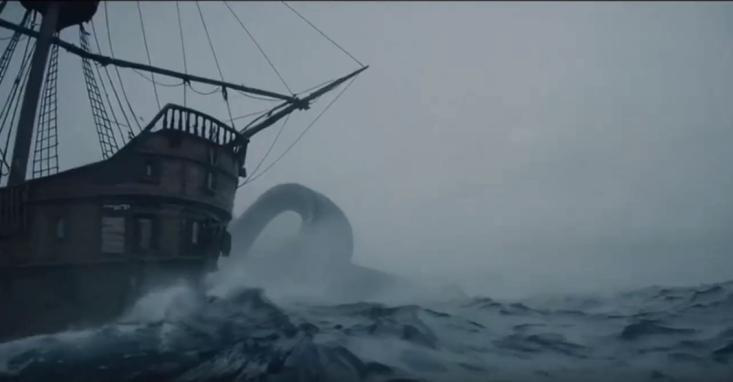
Figure 1: Sea Monster in Rough Sea (Video Screenshot)
It can be observed that, as the latest breakthrough technology from OpenAI in the field of AIGC, Sora’s unique technical architecture and algorithmic foundation give it unprecedented capabilities in video generation. Compared to traditional video production processes, Sora can convert input data such as text instructions, still images, and existing videos into high-quality video content. This enables creators to generate videos more efficiently and at a lower cost, providing unprecedented creative freedom and expression. Additionally, even inexperienced users can produce high-quality videos similar to those created by experienced creators.
4.2. Challenges for Sora in Content Generation
However, the emergence of Sora has posed a new challenge for identifying the originality of AI-generated content. Can the existing logic for identifying the originality of image products be applied to Sora’s video products?
In the field of image generation, AI models have been able to produce highly realistic images in various styles. The generation process for images is relatively straightforward, with the static rendering mode making the results more intuitive. Additionally, the difference between the author's intended instruction and the generated object remains relatively controllable, and the human contribution to the generated content is still significant. However, as AI technology advances into the realm of video generation, especially with advanced models like Sora, the gap between the intent of the instructions and the final product begins to grow more complex and unpredictable.
Video generation involves processing information across multiple dimensions, including temporal continuity, spatial dynamics, and audio-video synchronization. These factors increase the complexity and uncertainty of the generation process, making the difference between the product and the intended instruction more evident. It becomes increasingly difficult to identify the personalized expression of the author, and it is challenging to determine the relative contributions of human input versus machine input. This significantly increases the uncertainty of originality determination. [16]
For example, consider a recent video available online. The input text provided was:
"A fashionable woman walks in Tokyo. The streets are filled with warm neon lights and vivid city signs. She is wearing a black leather jacket, a long red skirt, and black boots, with a black purse in her hand. She wears sunglasses and red lipstick. She walks confidently and casually. The street is wet and reflective, creating a specular effect of colored lights. Many pedestrians walk up and down."
Sora generates a one-minute-long HD video that nearly perfectly represents the description in the text. When the video is truncated randomly, it is clear that the input primarily consists of textual instructions, reflecting economic input and conceptual guidance. However, creative elements such as character movement, head shaking, and shot transitions (e.g., the change in position from Figure 3 to Figure 4 and the video’s closing) were not directly operated or conceived by the human author. These were automatically generated by Sora's system, making it difficult to discern the author's creative ideas and further complicating the originality identification of such content.
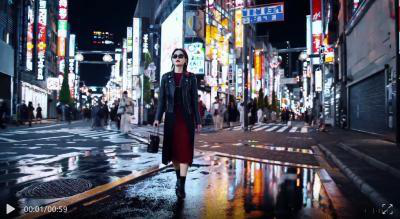
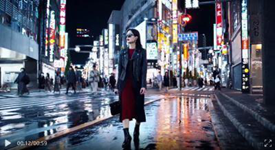
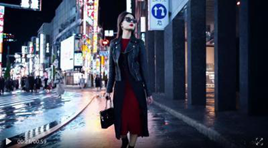
Figure 2: 1s(Video Screenshot) Figure 3: 12s(Video Screenshot) Figure 4: 23s(Video Screenshot)
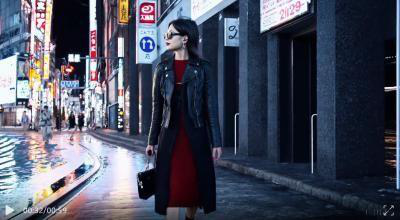
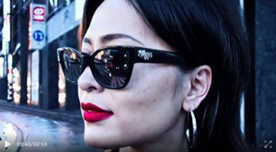
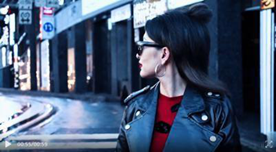
Figure 5: 32s(Video Screenshot) Figure 6: 40s(Video Screenshot) Figure 7: 55s(Video Screenshot)
This indicates that in the video generation process, Sora has transcended being a mere tool, and humans are no longer the dominant force in creation. Their role has shifted from being the primary creators to supportive participants, offering only a small amount of suggestive input to guide Sora’s creation. [17] Therefore, existing standards and methodologies for assessing the originality of image products may need to be adapted to align with the evolving trends in technology, particularly in the case of advanced video models like Sora.
5. Optimization Path for Identifying the Originality of Artificial Intelligence-Generated Video Content
5.1. Legislation Level: Improvement of the Standard for Identifying the Originality of Video Products
5.1.1. The Judgment Standard of Objective First and Subjective Second
Currently, due to gaps in legislation and the inconsistency of judgment standards, numerous problems have arisen in judicial practice regarding the originality of AI-generated content. A large number of conflicting judgments in the same case highlight the urgency of regulating a new standard and method for identifying originality.
Considering the current state of originality identification both domestically and internationally, the author suggests adopting a judgment standard of "objective first and subjective second." This means, firstly, the external expression of the work should be examined from the perspective of the result, assessing whether the work visually resembles human-made works; secondly, the process should be evaluated to determine whether the work embodies the author’s unique creative style, thoughts, and emotions. The rationale is as follows:
The "objective first and subjective second" criterion offers stronger operability. In practice, a clear and definite judgment standard is essential for ensuring the fair and efficient handling of cases. First, from the perspective of the result, attention should be paid to the work itself, focusing on the external expression of the work. The judge can use the "abstract separation method" to extract basic elements and structures, such as the theme and style of the video, and compare these with similar existing works. This helps quickly identify content that obviously lacks originality, such as simple video content copying or template generation, and prevent these from being included in the scope of copyright protection. [18] This process greatly improves the efficiency of the court, reduces subjective judgment interference, and enhances the objectivity and consistency of decisions. At the same time, since AI-generated video content primarily derives from deep learning of large datasets and existing works, it will inevitably be influenced by the original works it has learned from. Therefore, in the judicial adjudication process, the relevant parties can refer to the base works on which the AI is trained, as well as the plaintiff’s works, to assess whether the AI-generated content is original. [19]
Secondly, from the perspective of the process, it should be examined whether the works reflect the author’s unique creative style, thoughts, emotions, and individual expression.
The "objective first and subjective second" criterion aligns with the principle of the dichotomy between thought and expression. In copyright law, the principle of thought-expression dichotomy protects the external form of a work, not the creator’s internal thoughts or emotions. For AI-generated products, if their external forms of expression are visually, audibly, or structurally similar to works created by humans, and this similarity does not result from direct reproduction of existing works, then the possibility of copyright protection exists. This objective criterion, focusing on the presentation of the work itself, is the concrete embodiment of the thought-expression dichotomy principle in the judgment of originality, ensuring that the decision-making process is not influenced by subjective factors related to the creator. Thus, it maintains the stability and consistency of copyright protection.
In contrast, as a technological tool, AI-generated products often lack the "author" identity and subjective emotions traditionally attributed to creators. If we overemphasize subjective factors, such as creative style and thought-emotion, when determining the originality of AI products, we risk encountering a dilemma of unverifiable claims and diverging from the core requirement of the dichotomy principle—whether the work is expressed in a specific, perceivable form. Therefore, by first assessing the external expression and creativity of the product objectively, and then considering whether it embodies unique "style" or "emotion," we can preserve the objectivity and accuracy of the judgment process while recognizing the uniqueness of AI-generated content. [19]
5.1.2. Moderately Improving the Standards for Identifying the Originality of Video Products
In judicial practice, it is widely accepted that the determination of a work’s originality depends on its "existence" rather than its "degree." As long as a work possesses originality, it meets the relevant criteria. [11] However, this is difficult to apply when judging the originality of artificial intelligence-generated video content, particularly in terms of its "degree" of originality.
AI-generated video content offers significant advantages in terms of speed and output quantity compared to videos created by humans. However, behind this high-efficiency output lies much low-quality content that does not meet the traditional standards of originality for video works. While advanced AI models like Sora can produce video content reliably through deep learning and large-scale data training, Venson videos created by AI—if evaluated by the "minimum creativity" broad standard—do not fully meet the standards for copyright protection. Some videos still lack logical coherence, presentation integrity, and aesthetic quality, thus failing to meet the criteria for originality recognition. If these works were easily protected under the "minimum creativity" standard, it would dilute the value of copyright and fail to incentivize creativity.
To address these issues, the author suggests re-examining existing judgment standards and establishing a higher threshold for video production, particularly for AI-generated content that significantly deviates from the original author's intent. Only video products with clear logic, novel concepts, and overall expressions that are difficult to distinguish from human-made works should be recognized as original and eligible for copyright protection. This approach will not only eliminate the legal protection of low-quality video products but also encourage AI developers to optimize their algorithms, fostering more logical and innovative video works. This, in turn, would promote healthy competition and innovation in the market.
5.2. Judicial Level: Adherence to Case-by-Case Analysis
When evaluating the originality of Venson videos, in addition to adhering to the unified originality judgment standard at the macro level (i.e., the "objective first and subjective later" judgment standard mentioned above), the author emphasizes the importance of personalized identification at the micro level. It is essential to follow the principle of "case-by-case analysis," acknowledging and respecting the independence and particularity of each Venson video. Judicial consideration should be comprehensive, taking into account the inherent characteristics of the video and the uniqueness of its production process. Even Venson videos that use the same algorithm and data set and have similar themes will exhibit distinct originality due to variations in algorithm parameters, data sets, post-creative processing, and other elements. These subtle differences may be the deciding factors in meeting the originality standard.
Therefore, an original judgment based on surface-level standardization and modeling overlooks the unique attributes of each Venson video and the individual differences in its creation process. This approach fails to meet the diversified identification requirements of various Venson video types under increasingly stable technology. As a result, individual case analysis should be employed in judicial judgment. While similar cases may serve as references, they should not become the deciding factor with an excessive weight in the analysis, to avoid the rigidity of judicial judgment caused by over-reliance on analogous cases.
6. Conclusion
With the rapid development of artificial intelligence technology, AIGC has become a key topic in the digital age, particularly in the field of video generation. Compared to traditional video production, AI-generated video processes are more efficient and cost-effective, but they also introduce complexity in originality identification. Advanced Venson video models, such as Sora, produce video content that exhibits high creativity and integrity in terms of visual effects and narrative structure. However, they also increase the gap between the final product and the original instructions, exacerbating the difficulty of determining originality.
To address this challenge, on the legislative level, efforts should be made to fill gaps in the existing legislation, adopting the "objective first and subjective second" judgment standard. This means that, from the perspective of results, the external manifestation of the work should be examined first. Then, from the perspective of the process, it should be assessed whether the work embodies the author’s unique creative style and emotions. In practice, the "case-by-case analysis" method should be adhered to, respecting the uniqueness and differences of each Venson video. Each case should be analyzed according to its own characteristics and the specifics of its production process.
Looking ahead, the field of originality identification for AI-generated content is still developing, with many problems that need urgent resolution. The discussion in this paper represents a modest contribution and aims to offer some assistance in the innovation of video generation identification within academic circles. The author hopes that future in-depth research and judicial practice will lead to more refined and reasonable solutions for originality identification in this field. At the same time, the author calls for joint efforts from all parties to promote the healthy development of AI technology and establish a fairer and more reasonable intellectual property protection environment.
References
[1]. Feng Xiaoqing & Pan Baihua. (2020). Research on ai "creation" identification and protection of property rights and interests — Also commented on "the first case of copyright infringement of content generated by AI". Journal of Northwest University (Philosophy and Social Sciences Edition) (02), 39-52.
[2]. Jiang Ying. (2004). Comparative Study on Criteria for Determining the Originality of Works. Intellectual Property (03), 8-15.
[3]. Practical Encyclopedia of Copyright, edited by Shen Rengan, Guangxi People's Publishing House, 1996 edition, page 665
[4]. Li Wei-wen (2000). On the Originality of Copyright Object. Law Review (01), 84-90.
[5]. Paul Goldstein, (1999). Copyright, Patent, Trademark and Related State Doctrine. New York Foundation Press.
[6]. Shanghai Feifu Network Technology Co., Ltd. v. Guangzhou Baiji Network Technology Co., Ltd. and other copyright ownership and infringement disputes. State Internet Court, (2018) Yue 0192 Civil Judgment No. 1.
[7]. Xu Jie. (2024). Analysis of the ownership problem of the content copyright generated by artificial intelligence. Legal System Expo (07), 67-69.
[8]. Yang Lihua.(2021).Exploration on the copyright of artificial intelligence generation.Modern Law(04), 102-114.
[9]. Wu Haotian.(2023).The Originality and Protection Strategy of Artificial Intelligence Creation-Take"ChatGPT"as an Example.Science and Law(Chinese and English)(03), 76-86.
[10]. Copyright Infringement Case of Li v.Liu, Beijing Internet Court, (2023)Jing 0491 Civil Judgment No.11279.
[11]. Zhu Ge, Cui Guobin, Wang Qian&Zhang Wuyue.(2024).Is artificial intelligence-generated content(AIGC)protected by copyright law.China Law Review(03), 1-28.
[12]. Tao Kaiyuan.(2018).Strengthening Intellectual Property Judicial Protection Services to Drive Innovative Development Strategies.People Rule by Law(09), 7-9.
[13]. iang Ge.(2024).On Copyrightability of Content Generated by Artificial Intelligence:From the Perspective of User's Creative Expression.Intellectual Property(01), 36-67.
[14]. Liu Y, Zhang K, Li Y, etal.(2024).Sora:A Review on Background, Technology, Limitations, and Opportunities of Large Vision Models.Retrieved from https://arxiv.org/abs/2402.17177.
[15]. Dai Zhiyu.(2024).How AI makes art creation more vivid:OpenAI Sora The exploration and practice of the large model.Media Watch(S1), 34-36.
[16]. Huang Li.(2024).—Take Sora Wensheng video as an example.The press(06), 5973.
[17]. Yang Lihua&Zhao Chenxing.(2024).From ChatGPT to Sora:Copyright and ownership of ai products.Wuling Academic Journal(05), 60-69.
[18]. Yang Nina&Qi Yujing(2024).Judgment of short video originality:foreign comparison and rule building.Journal of Shandong University of Administration(05), 121-128.
[19]. Zhang Taiwei(2024).Research on the Originality Determination of Artificial Intelligence Generation.Communication and Copyright(24), 108-110.
Cite this article
Jing,M. (2025). From Picture Product to Video Product: Taking Sora as an Example to Explore the Originality Identification of Artificial Intelligence-Generated Content. Lecture Notes in Education Psychology and Public Media,88,88-97.
Data availability
The datasets used and/or analyzed during the current study will be available from the authors upon reasonable request.
Disclaimer/Publisher's Note
The statements, opinions and data contained in all publications are solely those of the individual author(s) and contributor(s) and not of EWA Publishing and/or the editor(s). EWA Publishing and/or the editor(s) disclaim responsibility for any injury to people or property resulting from any ideas, methods, instructions or products referred to in the content.
About volume
Volume title: Proceedings of the 3rd International Conference on Global Politics and Socio-Humanities
© 2024 by the author(s). Licensee EWA Publishing, Oxford, UK. This article is an open access article distributed under the terms and
conditions of the Creative Commons Attribution (CC BY) license. Authors who
publish this series agree to the following terms:
1. Authors retain copyright and grant the series right of first publication with the work simultaneously licensed under a Creative Commons
Attribution License that allows others to share the work with an acknowledgment of the work's authorship and initial publication in this
series.
2. Authors are able to enter into separate, additional contractual arrangements for the non-exclusive distribution of the series's published
version of the work (e.g., post it to an institutional repository or publish it in a book), with an acknowledgment of its initial
publication in this series.
3. Authors are permitted and encouraged to post their work online (e.g., in institutional repositories or on their website) prior to and
during the submission process, as it can lead to productive exchanges, as well as earlier and greater citation of published work (See
Open access policy for details).
References
[1]. Feng Xiaoqing & Pan Baihua. (2020). Research on ai "creation" identification and protection of property rights and interests — Also commented on "the first case of copyright infringement of content generated by AI". Journal of Northwest University (Philosophy and Social Sciences Edition) (02), 39-52.
[2]. Jiang Ying. (2004). Comparative Study on Criteria for Determining the Originality of Works. Intellectual Property (03), 8-15.
[3]. Practical Encyclopedia of Copyright, edited by Shen Rengan, Guangxi People's Publishing House, 1996 edition, page 665
[4]. Li Wei-wen (2000). On the Originality of Copyright Object. Law Review (01), 84-90.
[5]. Paul Goldstein, (1999). Copyright, Patent, Trademark and Related State Doctrine. New York Foundation Press.
[6]. Shanghai Feifu Network Technology Co., Ltd. v. Guangzhou Baiji Network Technology Co., Ltd. and other copyright ownership and infringement disputes. State Internet Court, (2018) Yue 0192 Civil Judgment No. 1.
[7]. Xu Jie. (2024). Analysis of the ownership problem of the content copyright generated by artificial intelligence. Legal System Expo (07), 67-69.
[8]. Yang Lihua.(2021).Exploration on the copyright of artificial intelligence generation.Modern Law(04), 102-114.
[9]. Wu Haotian.(2023).The Originality and Protection Strategy of Artificial Intelligence Creation-Take"ChatGPT"as an Example.Science and Law(Chinese and English)(03), 76-86.
[10]. Copyright Infringement Case of Li v.Liu, Beijing Internet Court, (2023)Jing 0491 Civil Judgment No.11279.
[11]. Zhu Ge, Cui Guobin, Wang Qian&Zhang Wuyue.(2024).Is artificial intelligence-generated content(AIGC)protected by copyright law.China Law Review(03), 1-28.
[12]. Tao Kaiyuan.(2018).Strengthening Intellectual Property Judicial Protection Services to Drive Innovative Development Strategies.People Rule by Law(09), 7-9.
[13]. iang Ge.(2024).On Copyrightability of Content Generated by Artificial Intelligence:From the Perspective of User's Creative Expression.Intellectual Property(01), 36-67.
[14]. Liu Y, Zhang K, Li Y, etal.(2024).Sora:A Review on Background, Technology, Limitations, and Opportunities of Large Vision Models.Retrieved from https://arxiv.org/abs/2402.17177.
[15]. Dai Zhiyu.(2024).How AI makes art creation more vivid:OpenAI Sora The exploration and practice of the large model.Media Watch(S1), 34-36.
[16]. Huang Li.(2024).—Take Sora Wensheng video as an example.The press(06), 5973.
[17]. Yang Lihua&Zhao Chenxing.(2024).From ChatGPT to Sora:Copyright and ownership of ai products.Wuling Academic Journal(05), 60-69.
[18]. Yang Nina&Qi Yujing(2024).Judgment of short video originality:foreign comparison and rule building.Journal of Shandong University of Administration(05), 121-128.
[19]. Zhang Taiwei(2024).Research on the Originality Determination of Artificial Intelligence Generation.Communication and Copyright(24), 108-110.





